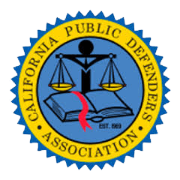
I want to tell you a secret: identity thieves are lurking everywhere, waiting to pounce on your personal information. It’s a scary thought, isn’t it? But here’s the good news – you don’t have to be a sitting duck. With a few simple identity theft protection tips, you can outsmart those sneaky fraudsters and keep your sensitive data locked up tighter than Fort Knox.
Imagine a world where your identity is truly yours, safe from the clutches of thieves. It’s not just a dream – it can be your reality! By implementing a few easy strategies, you can significantly reduce your risk of becoming another statistic in the rampant identity theft epidemic. Your future self will thank you for being proactive and taking control of your personal information today.
10 Easy Ways to Protect Yourself from Identity Theft in Los Angeles
As someone who’s been living in LA for over a decade, I’ve seen my fair share of identity theft cases. It’s a serious problem that affects millions of Americans every year. But the good news is, there are some simple steps you can take to protect yourself. I’m going to share with you 10 easy ways to prevent identity theft and keep your personal information safe.
Stay Vigilant
The first step in preventing identity theft is to stay vigilant. This means being aware of your surroundings and keeping an eye out for anything suspicious. If you receive an email or phone call from someone claiming to be from your bank or credit card company, don’t give out any personal information. Instead, hang up and call the company directly using a trusted phone number.
Check Credit Reports Regularly
One of the best ways to catch identity theft early is to check your credit reports regularly. You’re entitled to one free credit report from each of the three major credit bureaus every year. Make sure to review your reports carefully and look for any accounts or transactions you don’t recognize. If you spot anything suspicious, report it immediately.
According to a study by Javelin Strategy & Research, identity fraud losses totaled $56 billion in 2020. By checking your credit reports regularly, you can catch any fraudulent activity early and minimize the damage.
Use Strong Passwords
Another important step in preventing identity theft is to use strong passwords for all your online accounts. Avoid using easily guessable information like your birthdate or pet’s name. Instead, use a combination of upper and lowercase letters, numbers, and symbols. And don’t use the same password for multiple accounts.
I learned this lesson the hard way a few years ago when one of my online accounts was hacked. The hacker was able to access several of my other accounts because I had used the same password for all of them. Now, I use a password manager to generate and store unique, complex passwords for each of my accounts.
Be Cautious on Social Media
Social media can be a great way to stay connected with friends and family, but it can also be a goldmine for identity thieves. Be careful about what personal information you share on social media, and make sure your privacy settings are set to the highest level. Avoid posting things like your full birthdate, home address, or phone number.
Secure Your Mobile Device
Our mobile devices contain a wealth of personal information, from our contacts and emails to our banking apps and social media accounts. That’s why it’s so important to keep them secure. Make sure to use a strong passcode or biometric authentication to lock your device. And be cautious about what apps you download and what information you share with them.
Safeguard Your Personal Information
Now that we’ve covered some general tips for preventing identity theft, let’s dive into some specific ways to safeguard your personal information. These are the things that identity thieves are after, so it’s important to keep them under lock and key.
Shred Sensitive Documents
One of the easiest ways for identity thieves to get their hands on your personal information is by digging through your trash. That’s why it’s so important to shred any sensitive documents before throwing them away. This includes things like bank statements, credit card offers, and anything else with your personal information on it.
I invested in a good quality shredder a few years ago, and it’s been a game-changer. Now, I shred anything with my name, address, or account numbers on it before tossing it in the trash. It’s a small step that can make a big difference in protecting your identity.
Protect Your Social Security Number
Your Social Security number is like the holy grail for identity thieves. With it, they can open new accounts, take out loans, and even file fraudulent tax returns in your name. That’s why it’s so important to keep your Social Security number safe and secure.
One way to do this is to avoid carrying your Social Security card in your wallet. Instead, keep it in a secure place at home, like a safe or locked filing cabinet. And be very cautious about giving out your Social Security number, even if someone claims to be from a legitimate organization. If you’re unsure, hang up and call the organization directly using a trusted phone number.
Be Wary of Unsolicited Requests
Identity thieves are getting more and more sophisticated in their tactics. One common trick is to send out unsolicited emails or texts, posing as a legitimate organization and asking for personal information. They may claim that there’s a problem with your account or that you’ve won a prize, and they need your information to verify your identity.
Don’t fall for it. Legitimate organizations will never ask for sensitive information via email or text. If you receive a suspicious request, delete it immediately. And if you’re unsure whether a request is legitimate, contact the organization directly using a trusted phone number or email address.
Monitor Your Financial Accounts
One of the best ways to catch identity theft early is to keep a close eye on your financial accounts. This means regularly reviewing your bank and credit card statements, setting up alerts for suspicious activity, and reporting any unauthorized charges immediately.
Review Bank and Credit Card Statements
Make it a habit to review your bank and credit card statements every month. Look for any charges or transactions that you don’t recognize, no matter how small. Identity thieves often start with small charges to test the waters before making larger purchases.
If you spot any suspicious activity, report it to your bank or credit card company immediately. The sooner you catch it, the easier it will be to resolve. And don’t forget to review your statements for any recurring charges or subscriptions that you no longer use. Canceling these can help prevent future fraudulent charges.
Set Up Alerts
Don’t let suspicious credit card activity catch you off guard. Be proactive and set up alerts with your bank or credit card issuer. They’ll ping you when something seems off, like a big purchase, an international transaction, or a change to your personal info. The sooner you know, the sooner you can take action and prevent further harm to your accounts.
I have alerts set up on all my accounts, and it’s saved me from potential identity theft more than once. A few months ago, I received an alert about a large purchase made on my credit card in another state. I immediately called my credit card company and reported the fraudulent charge. They were able to cancel the transaction and issue me a new card, preventing any further damage.
Report Suspicious Activity Immediately
If you do spot any suspicious activity on your accounts, it’s important to report it immediately. Contact your bank or credit card company right away and let them know what’s going on. They can help you cancel any fraudulent transactions, issue new cards or account numbers, and take steps to prevent further damage.
It’s also a good idea to file a report with the Federal Trade Commission (FTC) and your local police department. This can help create a paper trail and may be necessary if you need to dispute any fraudulent charges or accounts opened in your name.
Secure Your Digital Life
In today’s digital age, it’s not just our physical documents and financial accounts that are at risk of identity theft. Our online accounts and digital devices are also prime targets for hackers and scammers. Here are some tips for securing your digital life and protecting your personal information online.
Use Secure Wi-Fi
When you’re out and about, it can be tempting to connect to any available Wi-Fi network to save on data. But be careful – public Wi-Fi networks are often unsecured and can leave your personal information vulnerable to hackers. If you must use public Wi-Fi, avoid accessing sensitive accounts or entering personal information.
Instead, use a virtual private network (VPN) to encrypt your internet connection and protect your data. A VPN creates a secure tunnel between your device and the internet, making it much harder for hackers to intercept your information. There are many reputable VPN services available, both free and paid.
Create Strong Passwords
We’ve already talked about the importance of using strong passwords, but it bears repeating. A strong password should be at least 12 characters long and include a mix of upper and lowercase letters, numbers, and symbols. Avoid using easily guessable information like your birthdate or pet’s name.
It’s also important to use a unique password for each of your online accounts. That way, if one account is compromised, the hacker won’t be able to access your other accounts using the same password. Consider using a password manager to generate and store complex passwords for each of your accounts.
Be Cautious When Shopping Online
Online shopping is convenient, but it can also put your personal and financial information at risk. When shopping online, only make purchases from reputable websites that use secure, encrypted connections. Look for the “https” in the website’s URL and a padlock icon in the address bar, which indicate that the site is using a secure connection.
Be wary of deals that seem too good to be true, as they may be scams designed to steal your information. And always review a website’s privacy policy and terms of service before making a purchase. If a site doesn’t have a privacy policy or seems sketchy in any way, it’s best to shop elsewhere.
Keep Software Updated
Think of outdated software as a cracked window in your house – it’s an open invitation for burglars to come in and take what they want. In the digital world, those burglars are hackers, and what they want is your personal information. By regularly updating your software and operating systems, you’re essentially fixing those cracks and reinforcing your defenses against cyber threats.
Picture this: you’re working on an important project when suddenly, a software update notification pops up on your screen. It’s tempting to click “Remind Me Later,” but resist the urge. These updates are designed to protect your devices and data from potential threats. Most programs are pretty good about automatically letting you know when it’s time to update, but it’s always a smart idea to check for updates yourself every now and then.
Consider Additional Protection Measures
You’ve taken the basic precautions, but if you’re still feeling a bit uneasy about your identity security, don’t worry – we’ve got your back. Here are a few extra measures to consider for that added layer of protection.
Sign Up for Credit Monitoring
Think of credit monitoring services as your personal credit security system. They continuously scan your credit reports, looking for any suspicious activity like new accounts opened in your name or changes to your personal information. If they find anything, they’ll alert you right away. Many services also include identity theft insurance and will guide you through the process of resolving any fraudulent activity, giving you an extra layer of protection in today’s digital age.
There are both free and paid credit monitoring services available. Some banks and credit card companies offer free monitoring as a perk for their customers, while others charge a monthly or annual fee. Do your research and choose a reputable service that fits your needs and budget.
Place a Fraud Alert
If you suspect that you may be a victim of identity theft, or if you’ve recently experienced a data breach or other security incident, you may want to place a fraud alert on your credit reports. A fraud alert notifies potential creditors that they should take extra steps to verify your identity before granting credit in your name.
There are two types of fraud alerts: initial and extended. An initial fraud alert lasts for one year and can be placed by contacting any one of the three major credit bureaus (Equifax, Experian, or TransUnion). An extended fraud alert lasts for seven years and requires a police report or other official document showing that you’ve been a victim of identity theft.
Freeze Your Credit
For even greater protection, you may want to consider freezing your credit. A credit freeze prevents new accounts from being opened in your name by restricting access to your credit reports. This means that even if a thief has your personal information, they won’t be able to use it to open new accounts or take out loans in your name.
Credit freezes are free and can be placed by contacting each of the three major credit bureaus individually. You’ll need to provide some personal information and create a PIN or password to manage your freeze. Keep in mind that a credit freeze won’t prevent all types of identity theft, such as someone using your existing accounts, but it can be a powerful tool in preventing new accounts from being opened.
Invest in Identity Theft Protection Services
Investing in a comprehensive identity theft protection service could be a smart move if you want the highest level of security. These services are packed with features to prevent identity theft from happening in the first place, catch it quickly if it does, and guide you through the process of resolving any issues that come up.
- Credit monitoring and alerts
- Dark web surveillance to detect if your personal information is being bought or sold online
- Identity theft insurance to cover any losses or expenses incurred as a result of identity theft
- Assistance with resolving fraudulent activity and restoring your identity
Identity theft protection services can be pricey, with monthly or annual fees ranging from $10 to $30 or more. But for some people, the peace of mind and added protection may be worth the cost. As with credit monitoring services, do your research and choose a reputable provider with a track record of success.
Table of Contents:
Conclusion
Protecting your identity doesn’t have to be a daunting task. By implementing these simple identity theft protection tips, you can significantly reduce your risk of falling victim to fraudsters.
Remember, vigilance is key. Stay alert, monitor your accounts regularly, and don’t be afraid to take swift action if you suspect something is amiss. Your personal information is precious – guard it with the same ferocity as a mama bear protecting her cubs.
Now that you’re equipped with the knowledge and tools to protect your identity, it’s time to put them into action. Don’t let those identity thieves get the best of you – stay vigilant and keep your personal information locked down tight. With a little effort on your part, you can rest easy knowing you’re in control of your own future.





